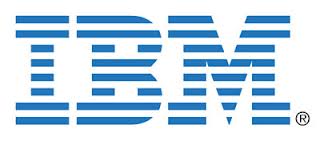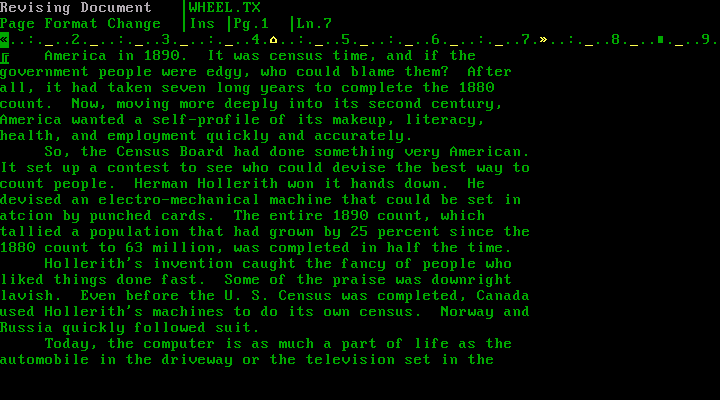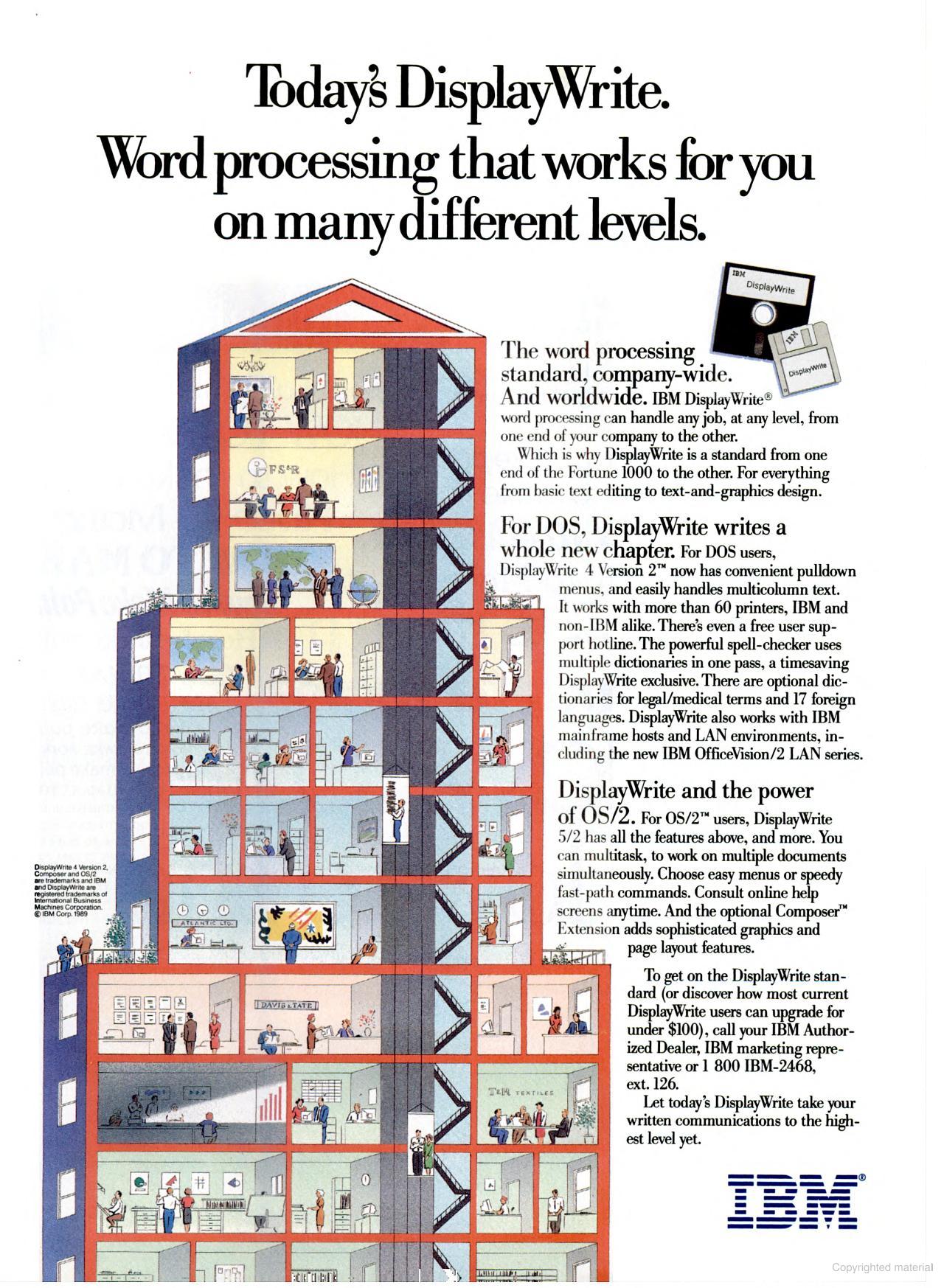 DisplayWrite
DisplayWrite
Introduction
In 1984, IBM announced DisplayWrite 1 for the IBM PCjr. It was among the company's first internally developed, commercially sold PC software, and cost $95. DisplayWrite's feature set was based on the 8086-based IBM Displaywriter System, a dedicated microcomputer-based word processing machine that had been launched in June 1980. This was IBM's rival to try to stem the tide of Wang machines that had been so popular in the office. As the early 80s progressed Displaywriter was enhanced with integrated graphics, database management capabilities and high-speed communications. Because the DisplayWrite 1 software was so similar to the Displaywriter System, an experienced Displaywriter user could start using DisplayWrite immediately.
DisplayWrite 1's documents could be transferred to an IBM PC for use in DisplayWrite 2 and also to Displaywriters. It came with a document conversion utility to change the file format to DisplayWrite 2. DisplayWrite 1 looks very similar to DisplayWrite 2 when you first start it up, though delving into the menus shows fewer options. One limitation of 1 is its 10-page document size limit.
The Displaywriter System was based on what IBM called "Textpacks". The first, and most simple was "Textpack E" which provided a basic word processor, suitable for short documents and letters. It had limited merge features, but did not support double-sided diskettes or have the merge facilities for larger document assemblies. This was followed with "Textpack 2" which added support for double-sided disks, communications with IBM's bi-synchronous networks, and an interface for transferring documents from IBM's magnetic-card memory typewriters. A spell-checker was available as well as background printing so you could simultaneously print and edit documents.
"Textpack 4" was the version most closely employed by the software-only DisplayWrite, which was sold under IBM's Entry Systems Division. It replaced the menus from earlier, less-sophisticated Textpacks, with a more integrated set. The main difference between a Displaywriter system and DisplayWrite was the PC's lack of dedicated function keys such as block copy/move, line- and page-formatting, and the Displaywriter's built-in mathematics functions. These instead used a combination of the PC's function keys and pop-up command menus in DisplayWrite.
DisplayWrite's native file format is based on IBM's DCA (Document Content Architecture) RFT (Revisable Form Text) specification, but adds additional structures. Depending on the Displaywrite version, the document files use .DOC or .TXT file name extension. The Displaywrite software can export to and import from pure DCA/RFT files (which typically have .DCA or .RFT file name extension). RFT (IBM Revisable Form Text) should not be confused with RTF (Rich Text Format), which is a Microsoft specification.
Also in 1984, DisplayWrite 2 was released. The retail price of the product was now $299, and it featured menu navigation and included a number of enhancements over the original. It came on two 5.25" 360 KB floppy disks, and required just 192 KB of RAM and DOS version 2.1 to run. It added a powerful search and replace feature which allowed up to three search/replace strings at once, foreign language and scientific word processing support where pressing the ALT key in combination with another key provided access to the PC's international character set, with up to 12 languages. The spell-checker had a fairly decent 100,000-word dictionary and a "legal support" dictionary was available too, adding 16,000 legal terms to the vocabulary. One of its most advanced features was columns - with formatting such as left, centre and right-justification, decimal-aligning numeric columns, and the inclusion of line and column labels.
Another key feature of DisplayWrite 2 was its ability to assemble documents together. The 'Get' function is easy to use, allowing you to merge one DisplayWrite 2 document into another anywhere on the current document's text screen. You can also use this feature to import DOS ASCII text files.
One major downside with DisplayWrite 2 was that it only supported 4 printers, three of which were IBM's: IBM PC Matrix, IBM PC Graphics, Displaywriter 5218, and the NEC 3550 (also sold by IBM Product Centers). It does not support the IBM Color Printer.
DisplayWrite 3 went on sale in 1985 for $450.
DisplayWrite 4 went on sale in June 1986 for $495.
In mid-1989, DisplayWrite 4 Version 2 was released for DOS in addition to DisplayWrite 5/2 for OS/2 version 1.1 - the latter cost $495 for the base product plus $200 for the Composer extension. It you already had an earlier version of DisplayWrite you could upgrade for $95. It did not use OS/2's Presentation Manager.
It featured pull-down menus, and support for over 60 printers. An embedded spell-checker with support for multiple dictionaries was included, plus the ability to work on multiple documents at the same time and share over a network. Some of the more useful features of 5/2 included split-screen editing, hidden text, a notepad for storing blocks of text, table of contents and indexes, centering on any point on a line, and a flexible footnote function that allowed you to gather a group of notes on a single page or store notes in a footnote library to reuse in different files. It also had a graphical page preview with multiple zoom levels, but this, like much of 5/2 was a bit clumsy, displaying the same text in multiple sizes on top of each other when at the highest zoom level. The Composer Extension, changed 5/2 significantly - the function keys were similar to those in 5/2, but the WYSIWYG screen with graphics and bit-mapped fonts in multiple sizes and styles worked well - it's more like a desktop publishing application. Unfortunately, without mouse control navigation was difficult. The importing of graphics files was supported, though limited to .TIFF, Lotus .PIC files, and IBM's own proprietary formats. .PCX was not supported.



